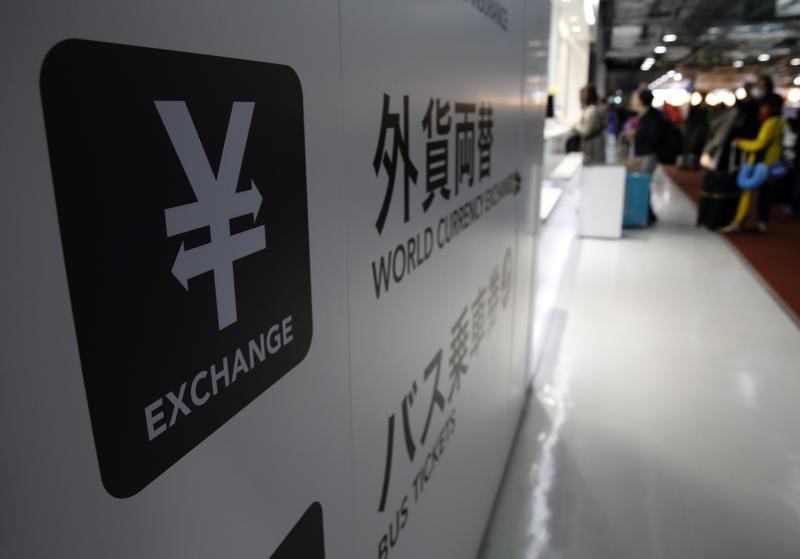(Bloomberg) -- Investors are redrafting their playbooks as they game out just how well different currencies can withstand -- or harness -- the rising tide of global consumer prices.
For the likes of Amundi Pioneer Asset Management and Brandywine Global Investment Management, the answer may lie in higher-yielding emerging markets or big commodity producers that stand to gain from rising prices. Analysts at Goldman Sachs. are more focused on mispriced opportunities around the policies of central banks, which may show more willingness to embrace FX appreciation and extend their rate-hiking cycles amid climbing inflation risks. And still others are of a mind to just hide out in the dollar -- the world’s biggest reserve currency and a go-to haven.
It’s an indication of just how prevalent global inflation fears have become that FX traders are having to sit up and take notice. Typically a sign to avoid or bet against a currency, rising prices are so widespread that traders are contemplating exotic currency pairings that offer relative value and considering whether central banks will diverge from conventional toolkits to rein in consumer-price gains without killing growth.
“We’ve always thought the market has underestimated the macro risk that inflation poses,” said Paresh Upadhyaya, director of currency strategy at Amundi Pioneer, which oversees $316 billion.
So far, the greenback has more than held its own, buoyed by the prospect of Federal Reserve policy tightening and a measure of confidence that officials there can keep price pressures in check. Even with deeply negative real yields -- the rate that bonds deliver with inflation taken into account -- the dollar is up against almost all of its biggest peers this year and many observers project it will remain strong into 2022.
A Bank of America survey released earlier this month showed that investors’ dollar positioning and views are the most bullish since 2015, while respondents pointed to central bank tightening and inflation as key risks for 2022.
Those concerns aren’t new for Jack McIntyre, a Philadelphia-based money manager at Brandywine, but he favors resource-linked currencies as the way to get positive exposure to global inflation risks. He currently has long positions on the Australian and Canadian dollars, as well as the Norwegian krone, preferring to express those trades against the Japanese yen and the euro instead of the U.S. dollar.
“We’re positioned for commodity prices at a minimum to be stable, and to actually continue to move higher,” he said.
He also underscored that with inflation becoming a potential problem for some central bankers, many that might have previously wanted a lower exchange rate may now be in favor of some appreciation.
“If inflation is becoming more of a concern, and it looks like it is, I think we could actually go to an environment where countries not only tolerate, but embrace a stronger currency,” McIntyre said.
How central banks choose to respond -- and the effectiveness of their toolkits in fighting the current inflation threat -- is, of course, critical to how currencies are likely to behave.
Europe is facing inflationary pressures, but the euro-area monetary authority appears to have less scope than some of its peers to lean against these with rate hikes. For Michael Cahill, an economist at Goldman Sachs (NYSE:GS) in London, there’s potential for investors to protect themselves with the currencies of neighboring countries whose central banks might prove more able to respond.
With inflation running hotter, the Swiss National Bank -- an authority that’s historically had quite a large presence in markets -- is less likely to intervene to cap the value of the franc, he said. On top of that, the currency could prove to be a haven if European inflation risks also begin to affect growth. All that means there’s still room for it to run higher against the euro, in his view.
Sweden could also provide opportunities if inflation sparks a more hawkish turn from the central bank there, according to Cahill, potentially buoying the {{|krona}} against the common currency. He favors expressing that view through an options-based wager that pays out if the euro hits particular levels against the Swedish and U.S. currencies.
Amundi Pioneer’s Upadhyaya, for his part, sees potential for the Australian dollar to gain against its New Zealand counterpart, reasoning that the market hasn’t priced in enough tightening by the Reserve Bank of Australia compared to its trans-Tasman peer.
He has also been looking at some more niche developing-market currencies that deliver higher yields -- both nominal and real. Upadhyaya has already taken long positions on the Egyptian pound, Kazakhstani tenge and Uzbekistani soum, and reckons there might be opportunities in the the Indian rupee and Indonesian rupiah. “On a volatility-adjusted basis, the carry is very attractive,” he said.
That said, investors may not have to think about anything too exotic if the greenback keeps on rallying. Morgan Stanley, for one, expects that a hawkish response from the Fed relative to its biggest developed-market counterparts will bolster the advantage in inflation-adjusted yields that America’s rate market has, and that the dollar will be a beneficiary, at least in the first part of 2022.
“This should support USD strength, particularly versus the low yielders, which are more sensitive to real yields,” analysts including Matthew Hornbach wrote in a note to clients this month.
